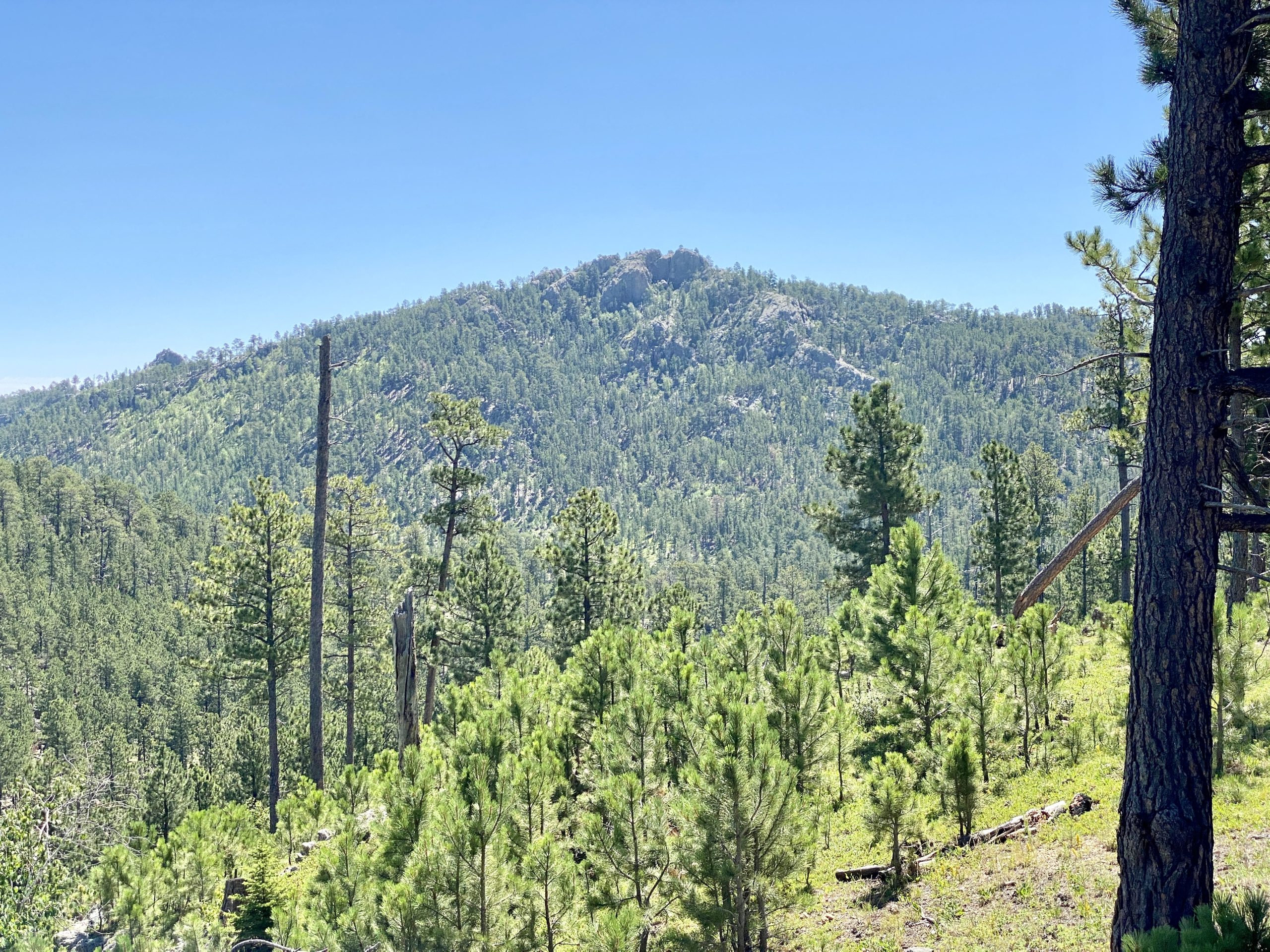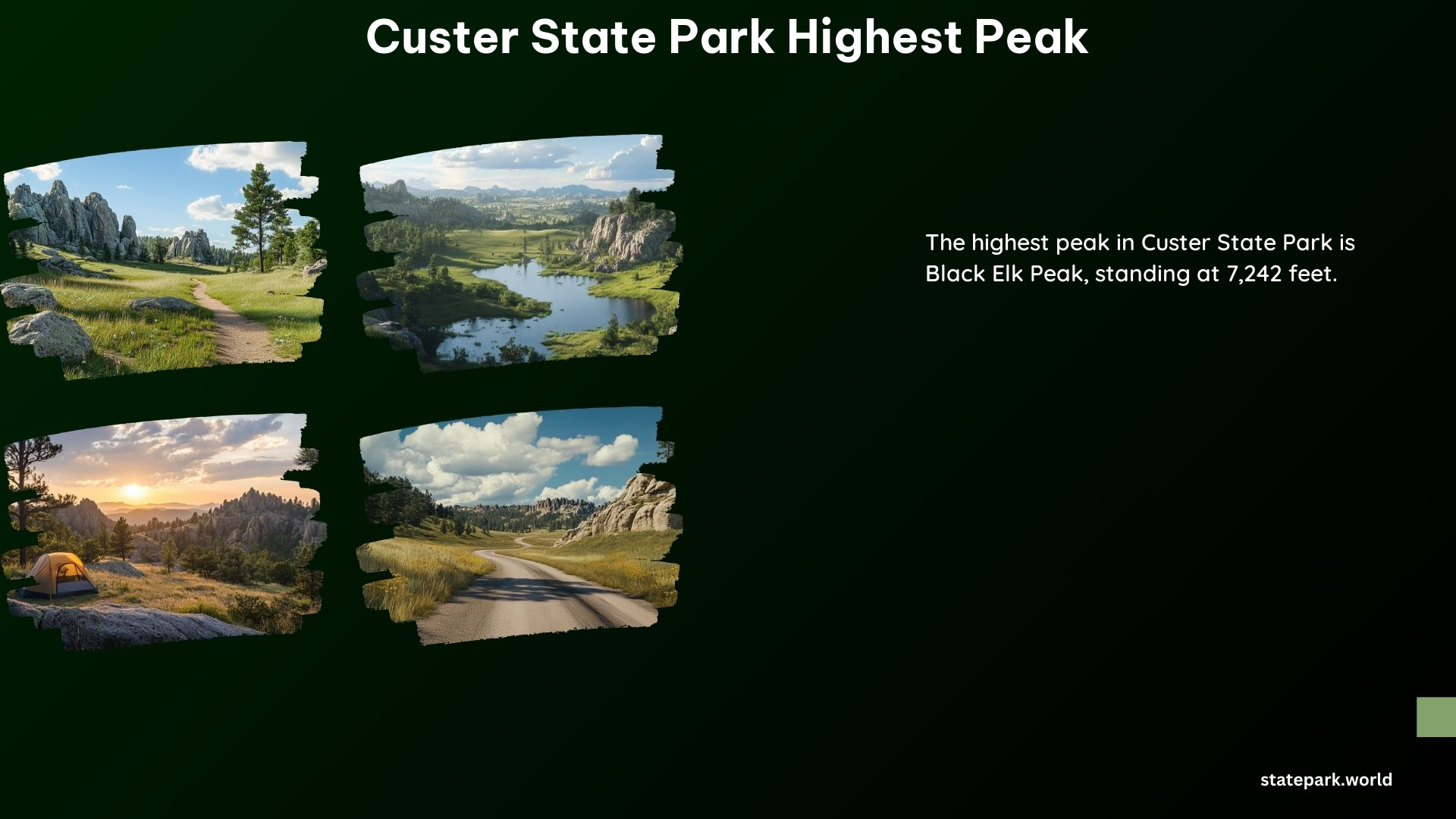Custer State Park’s highest point, Black Elk Peak, stands tall at an impressive elevation of 7,242 feet, making it the highest point in South Dakota. This iconic peak, formerly known as Harney Peak, was renamed in 2016 to honor the revered Sioux elder and medicine man, Nicholas Black Elk. Nestled within the breathtaking Black Hills National Forest, this sacred ground holds immense significance for Native American communities, particularly the Sioux.
The Allure of Black Elk Peak

Hiking to the summit of Black Elk Peak is a popular and challenging activity for outdoor enthusiasts visiting Custer State Park. The trail offers stunning vistas, diverse landscapes, and a chance to connect with the rich cultural heritage of the region. Whether you’re a seasoned hiker or a nature lover seeking a new adventure, Black Elk Peak is a must-visit destination in the heart of the Black Hills.
Reaching the Summit

The hike to the top of Black Elk Peak is approximately 7 miles round-trip, with an elevation gain of 1,100 feet. The trail can be accessed from two main trailheads: Sylvan Lake and Little Devils Tower. The hike is considered moderate to strenuous, making it a rewarding challenge for those seeking a more demanding outdoor experience.
| Trailhead | Distance (Round-Trip) | Elevation Gain |
|---|---|---|
| Sylvan Lake | 7 miles | 1,100 feet |
| Little Devils Tower | 7 miles | 1,100 feet |
Hikers should be prepared for the varying terrain and weather conditions, as the trail can be rocky, steep, and exposed to the elements. Proper hiking gear, including sturdy footwear, layers of clothing, and plenty of water and snacks, is essential for a safe and enjoyable journey to the summit.
The Breathtaking Views
Once at the top of Black Elk Peak, hikers are rewarded with panoramic views that stretch across the vast expanse of the Black Hills. The historic stone fire lookout tower, built by the Civilian Conservation Corps in the 1930s, stands as a testament to the region’s rich history and serves as a popular destination for visitors.
From the summit, hikers can gaze upon the surrounding peaks, valleys, and forests, taking in the natural beauty that has captivated generations of visitors. The vantage point offers a unique perspective on the diverse ecosystems and geological formations that make the Black Hills such a captivating destination.
The Cultural Significance
Black Elk Peak holds deep cultural significance for the Native American communities, particularly the Sioux. The peak was the site of a pivotal vision experienced by the revered Sioux elder, Nicholas Black Elk, when he was just nine years old. This vision is believed to have shaped his life’s journey and influenced his role as a spiritual leader and healer.
The renaming of the peak from Harney Peak to Black Elk Peak in 2016 was a significant acknowledgment of the cultural importance of this sacred site. It serves as a reminder of the rich history and enduring legacy of the Sioux people, who have long revered this majestic peak as a place of spiritual connection and cultural significance.
Exploring Custer State Park
While the hike to Black Elk Peak is undoubtedly the main attraction for many visitors, Custer State Park offers a wealth of other outdoor activities and natural wonders to explore. From the iconic wildlife loop, where visitors can spot bison, pronghorn, and other native species, to the scenic drives through the park’s diverse landscapes, there is something for everyone to enjoy.
Visitors to Custer State Park can also take advantage of the park’s extensive network of hiking trails, offering opportunities to discover hidden waterfalls, explore rugged canyons, and immerse themselves in the serene beauty of the Black Hills.
Planning Your Visit
To visit Black Elk Peak and Custer State Park, visitors will need to pay the park’s entrance fee, which is $20 per vehicle for a week or $36 for an annual pass. Hikers should plan their trip accordingly, taking into account the trail length, elevation gain, and their own fitness level.
It’s important to note that the hike to Black Elk Peak can be challenging, and hikers should be prepared for the varying weather conditions and terrain. Proper planning, packing, and safety precautions are essential for a safe and enjoyable experience.
Conclusion
Black Elk Peak, the highest point in Custer State Park, is a true gem of the Black Hills region. Whether you’re a seasoned hiker, a nature enthusiast, or someone seeking to connect with the rich cultural heritage of the area, this majestic peak offers an unforgettable experience. As you stand atop Black Elk Peak, take a moment to appreciate the breathtaking views, the significance of the site, and the opportunity to immerse yourself in the natural beauty of Custer State Park.
References:
- https://www.powderhouselodge.com/black-hills-attractions/outdoor-recreation/black-elk-peak/
- https://www.litaofthepack.com/guide-to-hiking-black-elk-peak-the-highest-point-in-south-dakota/
- https://www.travelsouthdakota.com/trip-ideas/photo-essay/black-elk-peak
